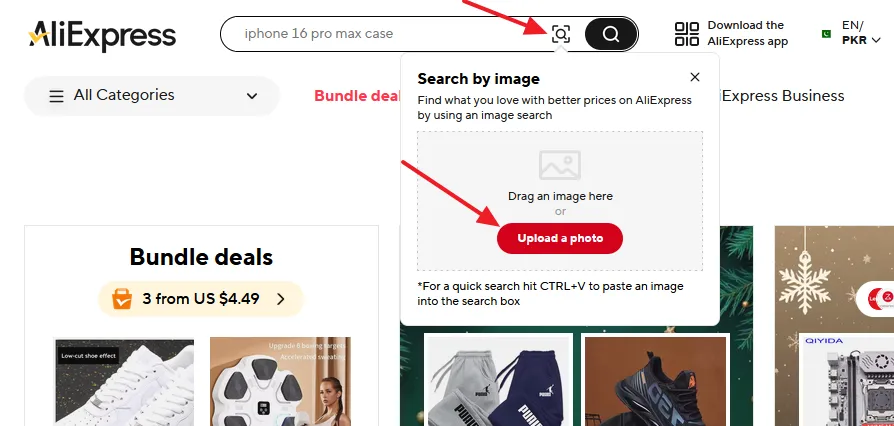Do you want to learn about visual search optimization strategies for e-Commerce sites? You’re in the right place.
In the ever-evolving landscape of e-commerce, visual search has emerged as a game-changing technology that allows customers to search for products using images rather than text.
As consumers increasingly rely on visual discovery, optimizing your e-commerce site for visual search is crucial to remain competitive.
Topics
- The Rapid Growth of Google Lens and Its Impact on Visual Search in E-Commerce
- Monthly Searches via Google Lens
- Growth Over Time
- Integration with Shopping
- User Engagement
- Visual Search Optimization Strategies for E-Commerce Sites
- Optimize Product Images
- Implement Structured Data
- Leverage AI-Powered Image Recognition Tools
- Enable Reverse Image Search
- Focus on Mobile Optimization
- Invest in Visual Content Creation
- Monitor Analytics and Refine Strategies
- Stay Updated with Industry Trends
- Conclusion
RELATED
- How to Optimize Images For Pinterest SEO
- How to Repurpose Content for Different Platforms
- Voice Search Trends 2025 and Beyond
- How to Use Google My Business for Small Businesses | Guide
- Understanding Google Lens SEO: Optimizing for Visual Search
01. The Rapid Growth of Google Lens and Its Impact on Visual Search in E-Commerce
Google’s visual search capabilities, particularly through Google Lens, have experienced significant growth in recent years.
| Google Lens is an AI-powered visual search tool by Google that identifies objects, text, and scenes in images or through a camera. It enables users to search, translate, shop, and interact with the world visually. |

Here are some key statistics highlighting this expansion:
1.1 Monthly Searches via Google Lens
As of 2024, Google Lens processes approximately 20 billion visual searches each month. [Ref: Wired]
1.2 Growth Over Time
In 2021, Google reported 3 billion monthly searches through Lens, which grew to 8 billion by 2022, and reached 12 billion in 2023. [Ref 1: ARINSIDER] [Ref 2: Rest of World] [Ref 3: Coalition Technologies]
1.3 Integration with Shopping
Google has enhanced Lens to facilitate shopping-related searches. In 2024, out of the 20 billion monthly searches, 4 billion are related to shopping, indicating a significant integration of visual search with e-commerce. [Ref: EMARKETER]

1.4 User Engagement
A notable percentage of online shoppers/customers find images influential in their purchasing decisions. Specifically, 53% of online shoppers say images inspire them to purchase. [Ref: Think with Google]
02. Visual Search Optimization Strategies for E-Commerce Sites
Below are some of the best visual search optimization strategies for e-Commerce sites or stores.
2.1 Optimize Product Images
High-quality images are the foundation of effective visual search. Here’s how to optimize your product visuals:
- Use high-resolution images that clearly showcase product details.
- Include images of the product from various perspectives, including close-ups of key features.
- Opt for clean, neutral backgrounds to minimize distractions.
- Add descriptive alt text, file names, and metadata to each image to enhance their discoverability by search engines.

| Alt Text: Alt text (alternative text) is a short, descriptive text added to an image’s HTML tag, providing context for visually impaired users and improving SEO by helping search engines understand the image content. |
| Metadata: Metadata is structured information embedded in a file, such as an image, that includes details like title, author, date, and keywords, enabling better organization, discovery, and management of digital assets. |
2.2 Implement Structured Data
Structured data helps search engines understand your content and facilitates better indexing for visual search.
Use schema markup for products to:
- Provide details like name, price, availability, and reviews.
- Ensure images are included in structured data fields.
- Enhance the likelihood of your products appearing in rich snippets or Google’s image-based search results.
| Schema Markup is a type of structured data code added to a website’s HTML to help search engines understand content more effectively. It enhances search results with rich snippets, such as reviews, ratings, and product details, improving visibility and click-through rates. Read: What is Schema Markup & How to Add It to a Website |

2.3 Leverage AI-Powered Image Recognition Tools
Adopt AI-driven solutions to enhance the accuracy of your visual search capabilities. Tools such as Google Vision API or third-party platforms like Syte can:
- Identify and categorize products based on visual elements.
- Suggest visually similar items to customers, boosting cross-sell opportunities.
- Improve search accuracy over time through machine learning.

2.4 Enable Reverse Image Search
Reverse Image Search is a feature that enables users to upload a photo to find matching or similar products in your store’s catalog. This simplifies product discovery and enhances the shopping experience by connecting visual inspiration to available items.
To implement this effectively:
- Optimize your site’s search functionality to support reverse image searches.
- Ensure your database is equipped with sufficient visual data for accurate matching.
- Provide detailed filtering options to refine search results.

06. Focus on Mobile Optimization
Many consumers use smartphones for visual searches. Ensure your site is mobile-friendly by:
- Implementing responsive design for seamless browsing.
- Optimizing page load times to prevent user drop-off.
- Adding visual search functionality to your mobile app, if applicable.

| || Looking for amazing mobile-optimized responsive themes starting from $2? Find Here. Looking for a fast-performance web-hosting? Get Here. |
07. Invest in Visual Content Creation
Beyond product images, create engaging visual content such as:
- Lookbooks: Showcase products in real-life scenarios to inspire purchases.
- User-Generated Content: Encourage customers to share photos of their purchases, tagged with your brand, to enrich your visual database.
- Video Demonstrations: Offer dynamic product visuals through tutorials and unboxing videos.

08. Monitor Analytics and Refine Strategies
Track the performance of visual search on your e-commerce site to identify areas for improvement.
Focus on:
- Search Trends: Analyze the types of images users upload and their search outcomes.
- Conversion Rates: Monitor how visual search impacts your sales funnel.
- Error Reports: Address mismatches or failed searches to improve algorithm accuracy.

09. Stay Updated with Industry Trends
Visual search technology is rapidly evolving. Stay informed about new developments, such as:
- Advances in augmented reality (AR) for virtual try-ons.
- Improvements in AI image recognition algorithms.
- Emerging platforms and tools that integrate seamlessly with e-commerce systems.
| Augmented Reality (AR) is a technology that overlays digital elements, like images or sounds, onto the real world through devices like smartphones or AR glasses. |
| Augmented Reality (AR) for virtual try-ons allows customers to visualize how products like clothing, accessories, or furniture will look on them or in their space using a device’s camera. This interactive feature enhances online shopping by improving confidence in purchase decisions. |

03. Conclusion
Visual search is no longer a futuristic concept—it’s a vital component of the modern e-commerce experience. By optimizing your site for visual search, you can provide a seamless and intuitive shopping journey, attract new customers, and increase conversions. Start implementing these strategies today to unlock the full potential of visual search in your online store.
If you like this post then don’t forget to share with others. Share your feedback in the comments section below.
Also Read






Leave a Reply